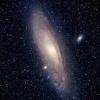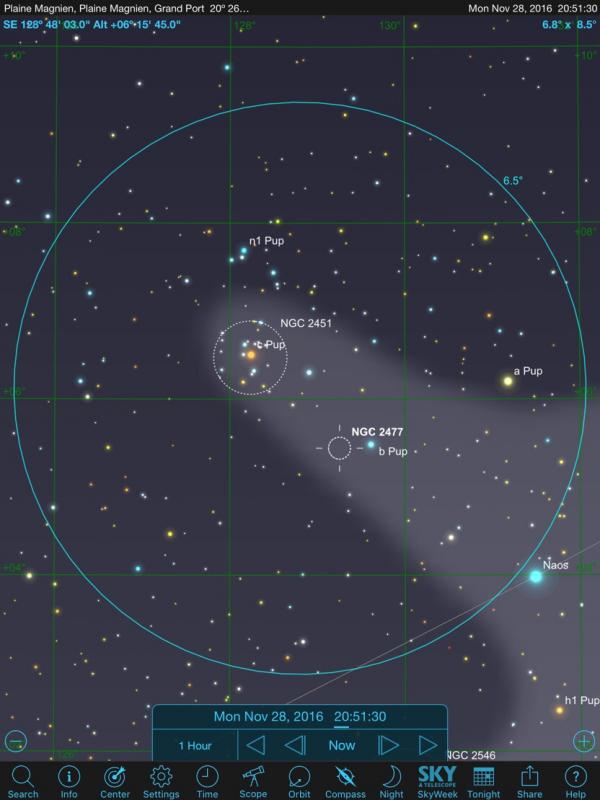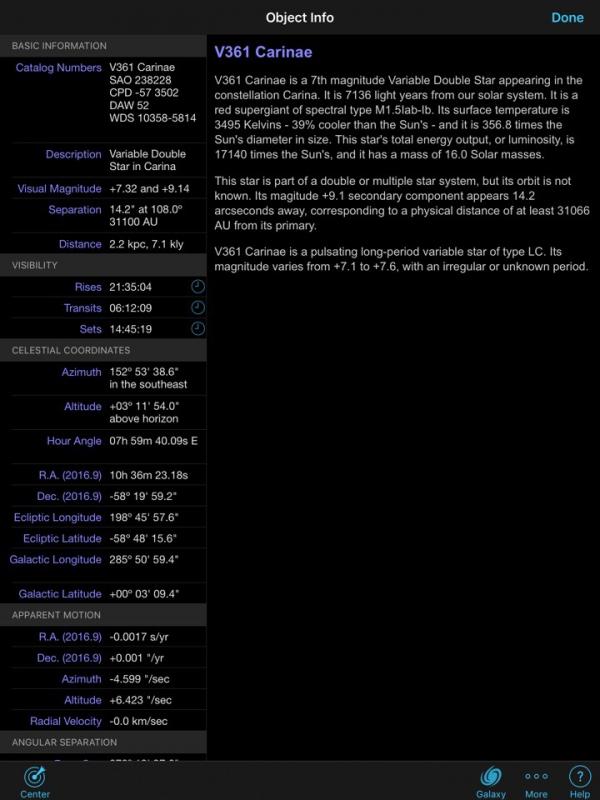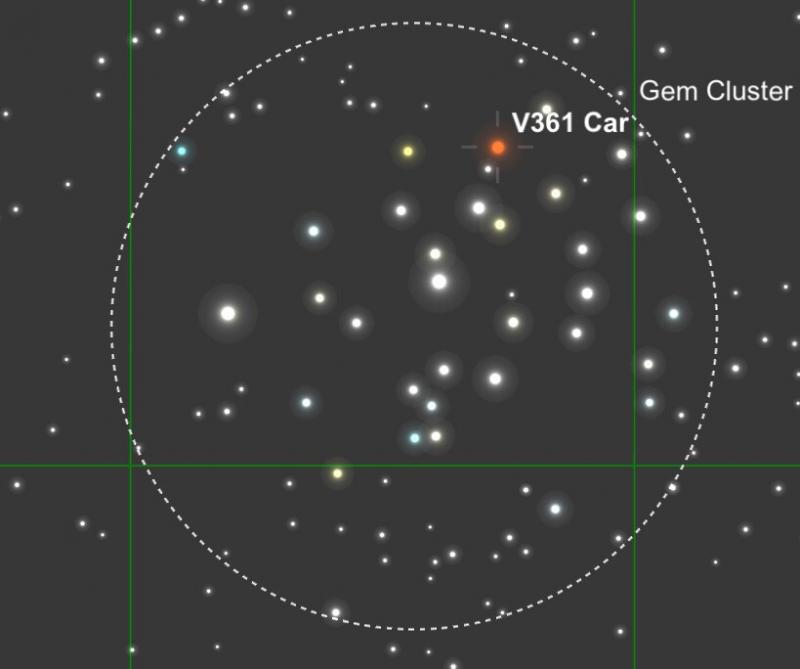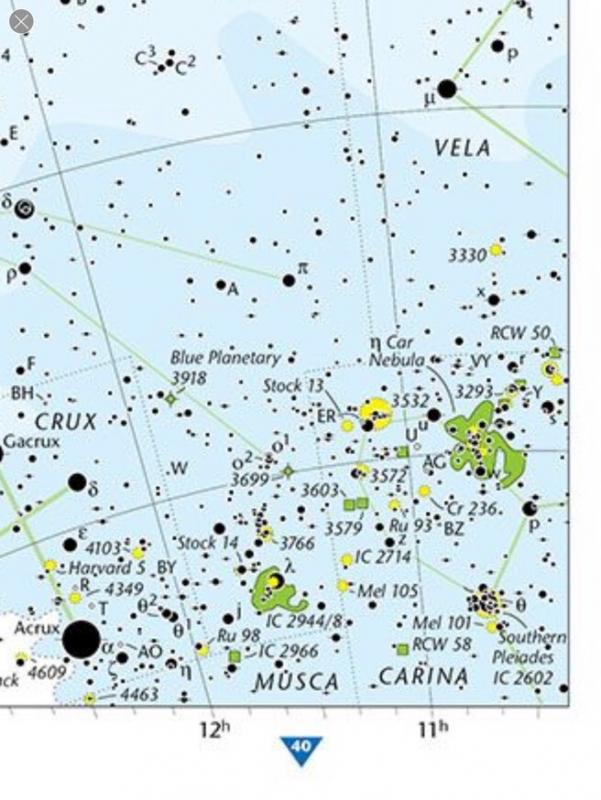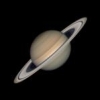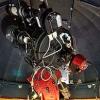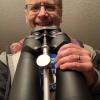I recently picked up a pair of Oberwerk 11x57 with a tripod and was able to get a clear night the day they arrived ![]() . Cloudy tonight though
. Cloudy tonight though ![]() My only previous experience was with an old Tasco Newtonian (114mm?) last used several years ago, where I was mostly frustrated by the poor equatorial mount. While I am subjectively pleased with my new binoculars (given my lack of experience), I am having a bit of trouble finding my way around the local area of interest, or verifying where I am once I look through the binoculars. It seems like some sort of finder would help, but is this just because I am inexperienced using an alt/az without a finder? I can generally find my way around my suburban moderately LP skies in the larger sense and know the basics of the more common constellations, reading a star chart, etc. Any hints or tips greatly appreciated!
My only previous experience was with an old Tasco Newtonian (114mm?) last used several years ago, where I was mostly frustrated by the poor equatorial mount. While I am subjectively pleased with my new binoculars (given my lack of experience), I am having a bit of trouble finding my way around the local area of interest, or verifying where I am once I look through the binoculars. It seems like some sort of finder would help, but is this just because I am inexperienced using an alt/az without a finder? I can generally find my way around my suburban moderately LP skies in the larger sense and know the basics of the more common constellations, reading a star chart, etc. Any hints or tips greatly appreciated!

Trouble getting lost in the weeds
#1

Posted 27 November 2016 - 09:53 PM
#2

Posted 27 November 2016 - 10:04 PM
You will get better with more experience. If you don't have any star charts or sky atlas, it would be helpful if you could get one. This will help you to locate objects. Download "Stellarium" (it's free) and learn to navigate your way around with it. There are several really good books on binocular astronomy too.
#3

Posted 27 November 2016 - 11:36 PM
An item that may help to show where your binoculars are pointed is Astronomy Shoppe's BinoBrac, used with a red dot finder. Here's a link to the product I'm talking about:
http://astronomy-sho...om/?page_id=192
A friend of mine uses a similar idea: a red dot sight from a small BB gun attached to the side of his binoculars with Velcro.
When I was learning the sky, the hardest transition I had to learn was the "leap" from star chart to true sky. It was hard for me to see the patterns on my star chart and then recognize the size changes when I looked up to find the same objects in the sky. As Coopman said, it takes time and practice.
A great book to help is Phil Harrington's Touring the Universe Through Binoculars.
Good luck,
Kevin
#4

Posted 27 November 2016 - 11:59 PM
Stellarium app on a tablet sure helps. Then just raise it to the sky and it will show you whats up there for you to see.
#5

Posted 28 November 2016 - 09:51 AM
Thanks for the suggestions thus far! I just ordered a Jumbo PSA and Binocular Highlights (Seronik) as these were 50% off at S&T (If I had procrastinated till today I would have saved another 10% ![]() ). I have Harrington on my list to buy and a copy of Turn Left at Orion somewhere in the house. Stellarium already downloaded on my desktop a week or two ago.
). I have Harrington on my list to buy and a copy of Turn Left at Orion somewhere in the house. Stellarium already downloaded on my desktop a week or two ago.
I'm hoping an Atlas while observing helps as I can identify a particular star naked eye, but just can't tell if I have it or another one in the FOV when switching to binoculars.
#8

Posted 28 November 2016 - 04:12 PM
Call me a Luddite, but I don't use iphone or ipad apps while observing under dark skies. I use them for planning or during a quick look around at home under bright urban skies. What I use most often is the Pocket Sky Atlas (didn't know there was a jumbo, I need to look into that), and a planisphere. The planisphere is useful for precise orientation with the bright signpost stars, and then I index into the charts I need in PSA. I think the most difficult part of orienting with binoculars is properly translating the image scale of what you see with the spacing on the chart. That is a nice feature of many of the planetarium programs as AllardK pointed out, but you can also make a little wire loop appropriate to your binocular and paper atlas.
I also find that it is considerably easier to know where your binoculars are pointed when they are hand held, compared to tripod mounted. With a parallelogram mount it is easier since you can "bring the binoculars to your face" while looking at the sky. One trick that I have used with a simple tripod mounted binocular, is to look with my left eye through the right barrel and keep my right eye open, so you have a roughly overlapped naked eye and magnified view. This makes it quite easy to know which star or asterism you are on as you move the binocular. You will also more easily detect faint objects in one eye while judging their position relative to bright starts in the other. Once you are roughly on target, you can resume normal star hopping with both eyes looking through the binocular.
Good Observing,
Alan
#9

Posted 28 November 2016 - 05:00 PM
Call me a Luddite, but I don't use iphone or ipad apps while observing under dark skies. I use them for planning or during a quick look around at home under bright urban skies. What I use most often is the Pocket Sky Atlas (didn't know there was a jumbo, I need to look into that), and a planisphere. The planisphere is useful for precise orientation with the bright signpost stars, and then I index into the charts I need in PSA. I think the most difficult part of orienting with binoculars is properly translating the image scale of what you see with the spacing on the chart. That is a nice feature of many of the planetarium programs as AllardK pointed out, but you can also make a little wire loop appropriate to your binocular and paper atlas.
I also find that it is considerably easier to know where your binoculars are pointed when they are hand held, compared to tripod mounted. With a parallelogram mount it is easier since you can "bring the binoculars to your face" while looking at the sky. One trick that I have used with a simple tripod mounted binocular, is to look with my left eye through the right barrel and keep my right eye open, so you have a roughly overlapped naked eye and magnified view. This makes it quite easy to know which star or asterism you are on as you move the binocular. You will also more easily detect faint objects in one eye while judging their position relative to bright starts in the other. Once you are roughly on target, you can resume normal star hopping with both eyes looking through the binocular.
Good Observing,
Alan
I've always enjoyed hardcopy maps, from my days as a Boy Scout, to flying (soloed at Torrance and was based at Hawthorne) - I do use apps to peruse the current/future sky and see FOV and LP effects.
I'll have to give the mixed eye viewing trick a shot, of course it is forecast to be cloudy and rainy the next few nights here in GA - figures. I 'think' I can start hop OK once I know where I am starting from is where I am at.
#10

Posted 29 November 2016 - 01:24 AM
I have hardcopy maps as well. Interstellarium, Pocket Sky Atlas etcetera.
Problem is they are not detailed enough, certainly not if you go larger aperture. Also the app gives lots of information on a particular more obscure star...like this.... star V361 Carinae...which is in the Gem cluster...NGC 3293.
#13

Posted 29 November 2016 - 01:35 AM
So, if you consider yourself a Luddite, you should only observe with your eyes and distroy your binoculars ![]()
#14

Posted 30 November 2016 - 01:46 AM
So, if you consider yourself a Luddite, you should only observe with your eyes and distroy your binoculars
I didn't say that I consider myself a Luddite, I just sarcastically invited you to call me one!
I have had trouble using iphone, ipad, or laptop because even with "night mode" they tend to interfere with dark adaptation at a dark site. With paper charts and a dimmable red light I seem to be able to better maintain my night vision. At home in brighter skies I do use the apps while observing. And as I said do use them for planning and for reviewing my observations.
I was going to close with the expression, "call me crazy," but now I'm afraid that you will ![]()
Good Observing,
Alan
#15

Posted 30 November 2016 - 07:36 AM
Are you cr......?!
![]()
For me it works with the brightness at the lowest position. For small binoculars charts will work. Go up magnification and aperture and apps are more needed. ....not to get lost in the abundance of stars. What sort of equipment do you normally use ?
#16

Posted 01 December 2016 - 02:37 AM
For astronomy my most used binocular is Canon 15x45 IS for hand held. I use this at the telescope and also in a lounge chair. Less often I use a 7x50 Fujinon hand held for wider views. I use a Fujinon 14x70 mounted on a couch potato binocular chair for extended binocular viewing. My club has a Jim's Mobile 150mm reflector reverse binocular telescopes, but I rarely use those.
As I've said before, I also consider a binocular to be be an essential telescope accessory, so I always have my 15x45 out with me when I use my Teleport 7" dob or my 11" Starmaster dob. I also have a small refractor that I mostly use at home. It is a Televue Oracle, a 3" cemented triplet that preceded the ED generation of TV refractors (85, 76, etc.). I tried using a binoviewer with my telescopes for a while, but decided I really didn't care for it.
I mostly hunt deep sky objects with my telescope. I use the brighter stars to get on the right field with my binoculars, and then I use a reflex sight to get my telescope on that field and use a low power eyepiece to confirm I am on the right field. The field atlas helps me locate the objects of interest relative to the relatively bright stars so that I can get on that right field. If I can't find the object, then I will sketch the star field where I expected to find it and look at a deeper atlas or planetarium app afterwards. And, yes I do have digital setting circles on my telescopes, but unless the object is relatively bright or familiar to me, I find it useful to confirm the field with bright stars and an atlas. My binoculars have a 4.5 degree field, and my low power eyepiece gives me a 1.5-2 degree field, so plus or minus some mirror reflections there is plenty of context to move from naked eye bright star knowledge to binocular field to telescope field.
Good Observing,
Alan
#17

Posted 01 December 2016 - 05:38 AM
Ok :-)
![]()
For me small binoculars are used as a standalone or in combination with a BT or telescope. Some starfields are simply to big to be seen together in a telescope or BT. Sometimes the zoomed out small binoculars view gives a better impression of the object. I can watch a whole night with my 10x50, 18x70 etcetera.
I am very interested in individual stars as well, placing them in HR diagrams, comparing subtle color differences etcetera.
If I can't find an object, I check the App. Sometimes it turns out I am in the right area but the object is not very conspicuous.
While hunting for an object I sometimes come across an interesting star or other object. The app gives more and immediate) info. It is actually fun just to wander around and stop at something that stands out.
As you have digital setting circles you are not a luddite ![]()
#18

Posted 01 December 2016 - 01:30 PM
I recently picked up a pair of Oberwerk 11x57 with a tripod and was able to get a clear night the day they arrived
. Cloudy tonight though
My only previous experience was with an old Tasco Newtonian (114mm?) last used several years ago, where I was mostly frustrated by the poor equatorial mount. While I am subjectively pleased with my new binoculars (given my lack of experience), I am having a bit of trouble finding my way around the local area of interest, or verifying where I am once I look through the binoculars. It seems like some sort of finder would help, but is this just because I am inexperienced using an alt/az without a finder? I can generally find my way around my suburban moderately LP skies in the larger sense and know the basics of the more common constellations, reading a star chart, etc. Any hints or tips greatly appreciated!
Your binoculars likely have as much or more FOV as many finders. What might be more helpful would be mounting a GLP finder to your binoculars and/or mount. I really like the instant naked eye verification of where the binos are aimed. But I also really like GOTO (i.e., being able to aim the GLP at precisely the target/spot I'm looking for. My solution is to mount a GLP finder on a small spotting scope mounted on a small GOTO alt-az mount, and use that set-up as a robotic "finder" for the mounted binoculars. It works brilliantly. I happen to be running a C90 Mak-Cass spotter, but a C5 SCT or C6 SCT would be even better (i.e., complementary to the binocular experience, allowing serious "zoom in" capability of shared targets between the binos and the scope).
Regards,
Jim
#19

Posted 01 December 2016 - 06:43 PM
I recently picked up a pair of Oberwerk 11x57 with a tripod and was able to get a clear night the day they arrived
. Cloudy tonight though
My only previous experience was with an old Tasco Newtonian (114mm?) last used several years ago, where I was mostly frustrated by the poor equatorial mount. While I am subjectively pleased with my new binoculars (given my lack of experience), I am having a bit of trouble finding my way around the local area of interest, or verifying where I am once I look through the binoculars. It seems like some sort of finder would help, but is this just because I am inexperienced using an alt/az without a finder? I can generally find my way around my suburban moderately LP skies in the larger sense and know the basics of the more common constellations, reading a star chart, etc. Any hints or tips greatly appreciated!
Your binoculars likely have as much or more FOV as many finders. What might be more helpful would be mounting a GLP finder to your binoculars and/or mount. I really like the instant naked eye verification of where the binos are aimed. But I also really like GOTO (i.e., being able to aim the GLP at precisely the target/spot I'm looking for. My solution is to mount a GLP finder on a small spotting scope mounted on a small GOTO alt-az mount, and use that set-up as a robotic "finder" for the mounted binoculars. It works brilliantly. I happen to be running a C90 Mak-Cass spotter, but a C5 SCT or C6 SCT would be even better (i.e., complementary to the binocular experience, allowing serious "zoom in" capability of shared targets between the binos and the scope).
Regards,
Jim
I like this idea, and may give it a go after trying the split eye method. Seems I could use this with another scope, perhaps a medium dob, slaved to the GOTO GLP, much like the binoculars.




